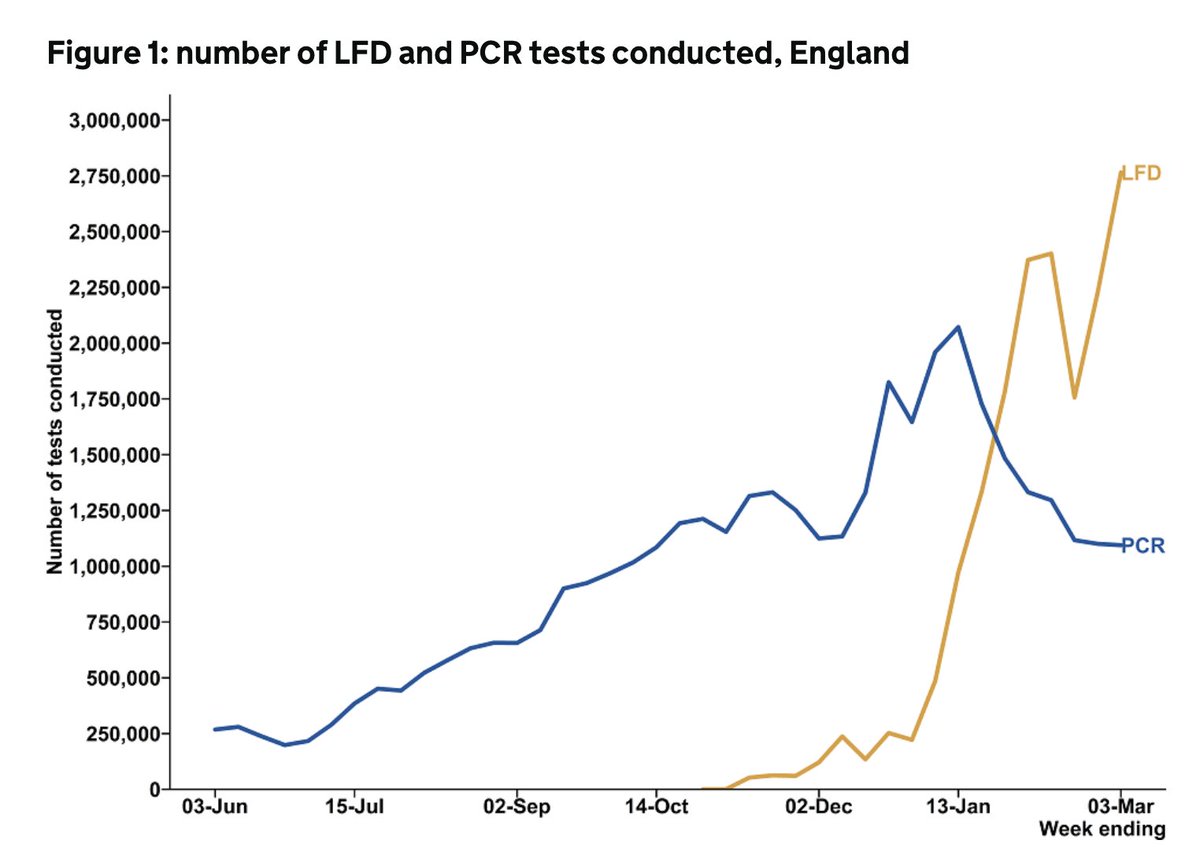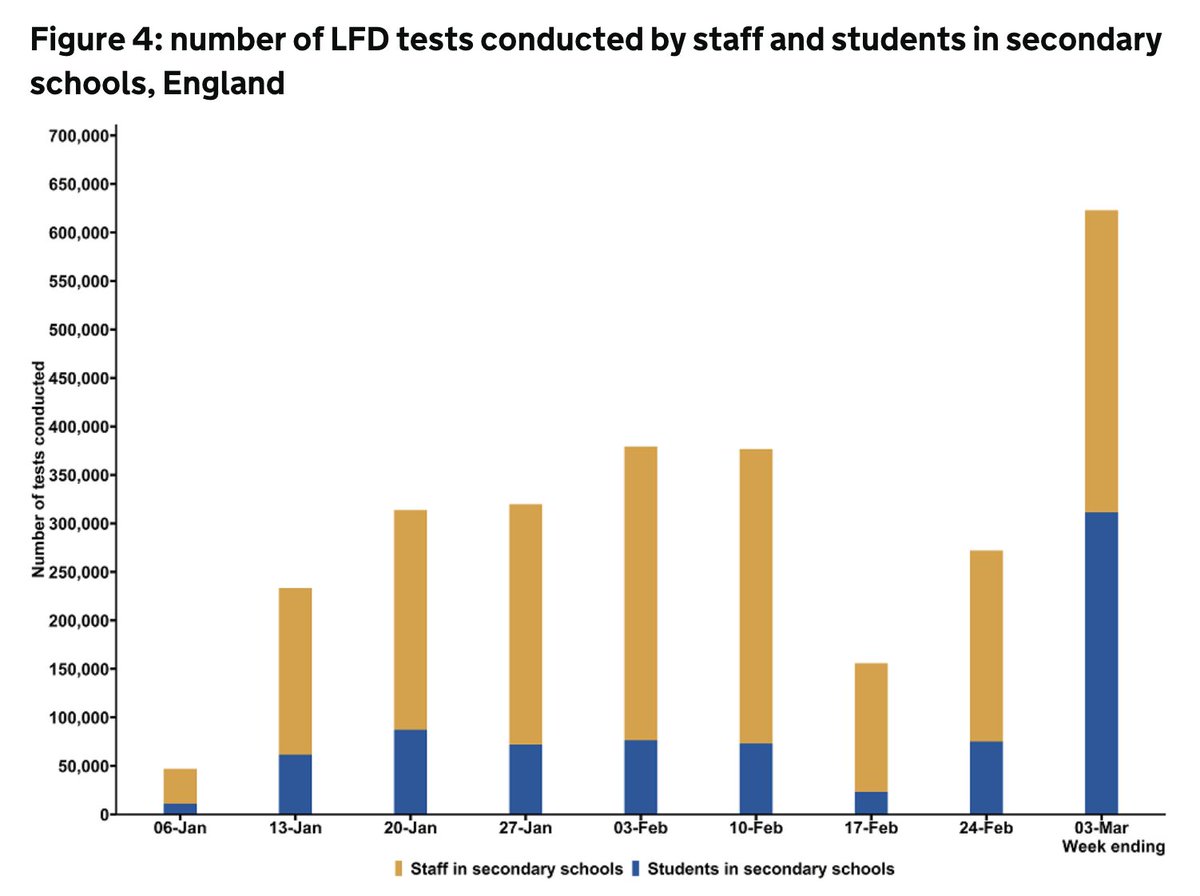
This week's PHE surveillance report is now out, covering 15-21 March. 🧵
Tl,dr:
- increasing case rates among 5-9y/o and 10-19y/o
- important geographic variation
- hospital data still improving
- vax going strong
- and inequalities persist.
gov.uk/government/sta…
Tl,dr:
- increasing case rates among 5-9y/o and 10-19y/o
- important geographic variation
- hospital data still improving
- vax going strong
- and inequalities persist.
gov.uk/government/sta…

Number of PCR and LFD tests done similar to the previous week, but positivity (percentage of tests that are positive) for PCR still trending down and is now 2.1%
For LFDs it's 0.19% compared with 0.15% the week before.
For LFDs it's 0.19% compared with 0.15% the week before.

Case rates are falling less slowly, but they're still falling across all ages...
*except* 5-9y/o where they're up 59% to 63.5/100,000, and 10-19y/o where they're up 26% to 100.7/100,000.
Case rates lowest in vaccinated cohorts.
*except* 5-9y/o where they're up 59% to 63.5/100,000, and 10-19y/o where they're up 26% to 100.7/100,000.
Case rates lowest in vaccinated cohorts.

LFD testing among school children will have a role in higher case rates among 10-19y/o but don't tell the whole story.
5-9y/o aren't (or at least, shouldn't) be being tested with LFDs, so more likely higher case rates are due to PCR symptomatic testing.
5-9y/o aren't (or at least, shouldn't) be being tested with LFDs, so more likely higher case rates are due to PCR symptomatic testing.
As @chrischirp summarised yesterday, it's consistent with some school spread & is expected.
If/how much this leads to infections in other age gps over coming weeks will be more important, & how much regular testing/masks etc have helped limit transmission
If/how much this leads to infections in other age gps over coming weeks will be more important, & how much regular testing/masks etc have helped limit transmission
https://twitter.com/chrischirp/status/1374818825049415690?s=20
The change in case rates by age differs by region.
Yorkshire and Humber now have the highest case rates and you can see how this is driven by rising case rates among 10-19y/o.

Yorkshire and Humber now have the highest case rates and you can see how this is driven by rising case rates among 10-19y/o.


And as lock down begins to ease, some really stark differences by local authority
Esp N vs S, with highest rates in Barnsley at 185/100,000 and the lowest in Devon at just 14/100,000
Esp N vs S, with highest rates in Barnsley at 185/100,000 and the lowest in Devon at just 14/100,000

Many places that have had high ongoing case rates since last summer continue to have high rates now - places like Bolton, Leicester, Wigan, Blackburn with Darwen all still have rates of >100/100,000.
These are places where many people can't work from home, with high levels of job insecurity, crowded housing, caring responsibilities, high levels of deprivation.
This means more exposure to the virus and it being hard, if not impossible, to comply with isolation guidelines
This means more exposure to the virus and it being hard, if not impossible, to comply with isolation guidelines
The very places impacted most by lockdown will take the longest to recover because of the long term structural drivers of poor health and inequalities - housing, employment, poverty, healthy places.
It's a huge issue of social justice. And it effects everyone.
Without addressing areas of enduring transmission, gov cannot level up, there will still be outbreaks and emergent variants.
Without addressing areas of enduring transmission, gov cannot level up, there will still be outbreaks and emergent variants.
Just on Weds, Matt Hancock said "levelling up health outcomes is the most important levelling up of all".
Meaningful change will need action on inequalities across gov, in every decision in every dept
Otherwise we risk another @MichaelMarmot lost decade
instituteofhealthequity.org/resources-repo…
Meaningful change will need action on inequalities across gov, in every decision in every dept
Otherwise we risk another @MichaelMarmot lost decade
instituteofhealthequity.org/resources-repo…
There are still some differences in case rates by ethnicity, more prominent when looked at at the regional level. 



In terms of outbreaks/incidents reported to PHE.
Really great to see another big drop in care homes.
Really great to see another big drop in care homes.

But an expected step up in schools.
The trends here are what's important rather than absolute amounts and this is still just the second wk back.
Next wk's data for school age cases and outbreaks will be a far better indicator of impact of schools opening than this wk.
The trends here are what's important rather than absolute amounts and this is still just the second wk back.
Next wk's data for school age cases and outbreaks will be a far better indicator of impact of schools opening than this wk.
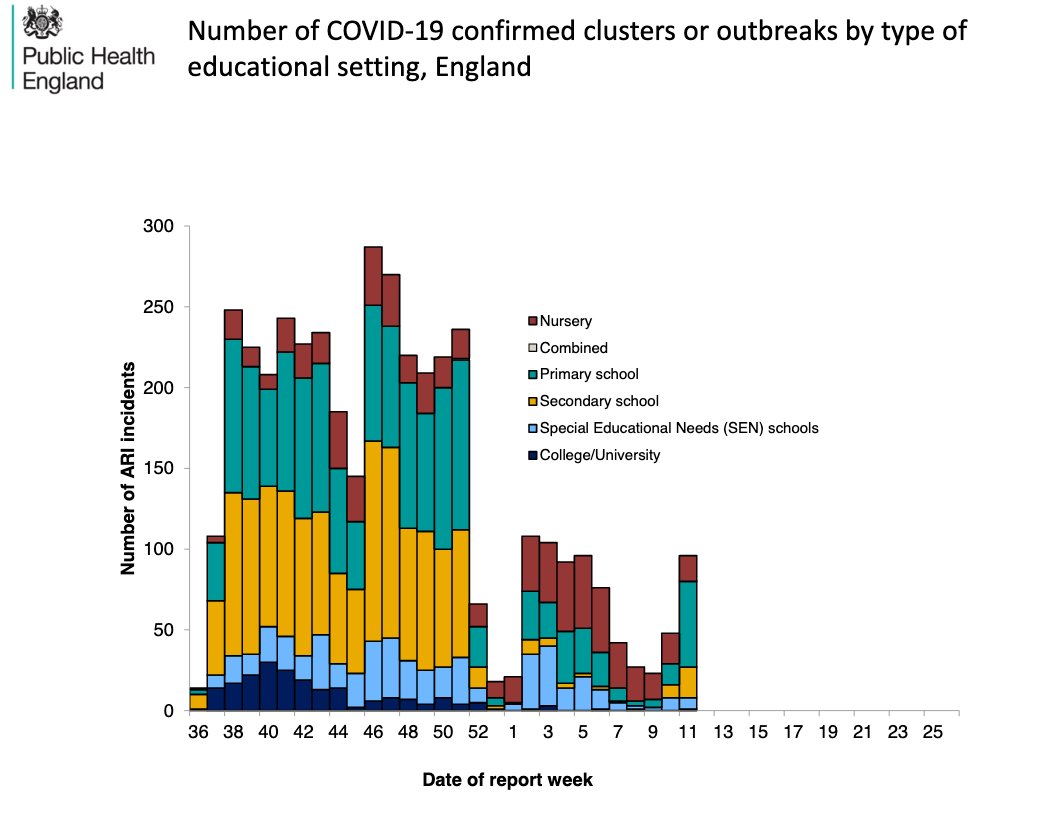
Still v low numbers of outbreaks reported to PHE among hospitals and importantly in workplaces as well. 


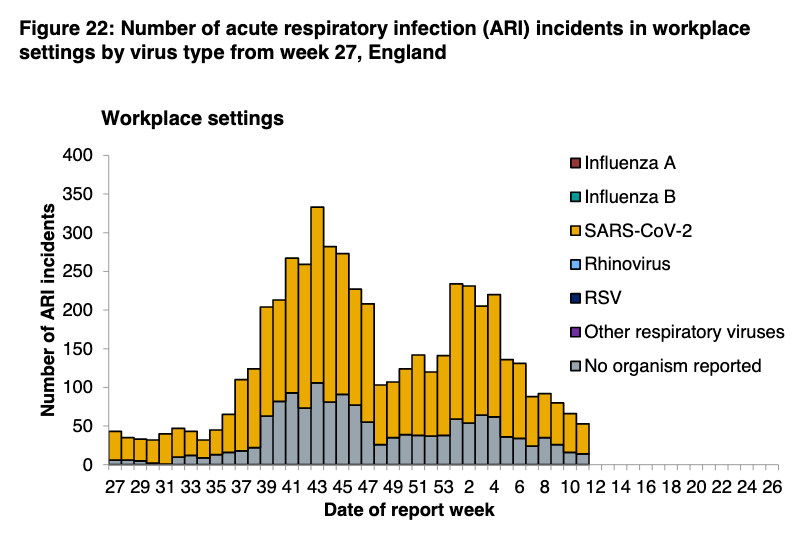
Whilst case rates might be mixed, the hospital situation is looking really positive.
Admission rates still falling in all ages (incl. not vaccinated cohorts) and regions. And numbers in hospital at around a quarter of the first wave.



Admission rates still falling in all ages (incl. not vaccinated cohorts) and regions. And numbers in hospital at around a quarter of the first wave.
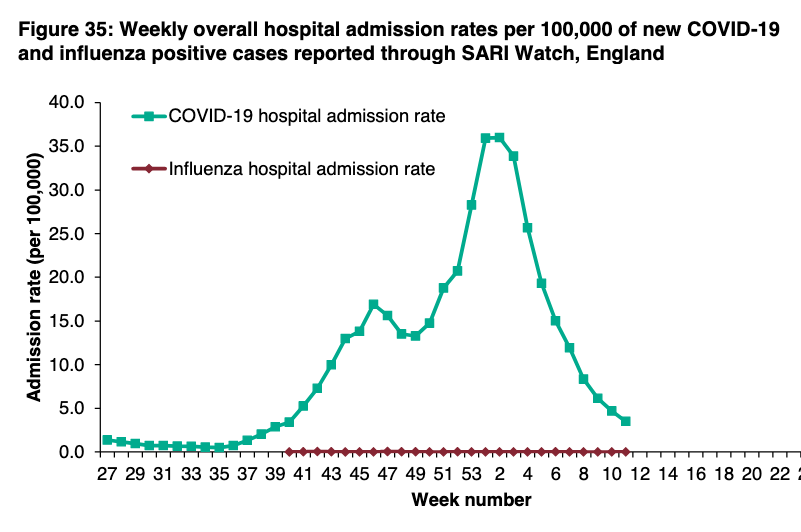



On the vaccination front, encouragingly the *vast* majority of people being offered are taking it up as we move down through JCVI cohorts.


https://twitter.com/YouGov/status/1375060133168959489?s=20

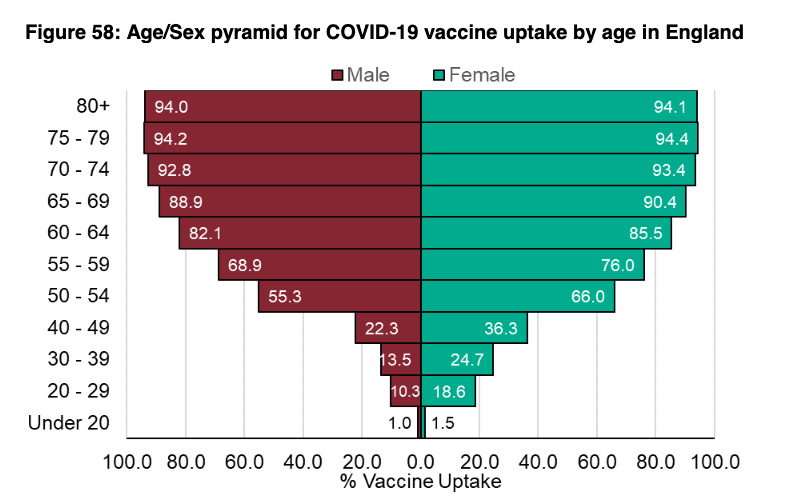
And same as last wk, it's important to say that those who haven't yet been vaccinated in priority groups are more likely to be from more deprived, vulnerable & minority groups.
Groups most impacted by COVID.
It's therefore critical that efforts to reach these people continue.
Groups most impacted by COVID.
It's therefore critical that efforts to reach these people continue.
PHE surveil rpt☝️ @felly500 @deb_cohen @martinmckee @carolecadwalla @mgtmccartney @ADPHUK @Jeanelleuk @fascinatorfun @profchrisham @petermbenglish @HPIAndyCowper @Davewwest
@HSJEditor @KateAlvanley @IndependentSage
@nedwards_1 @SamanthaJonesUK @ewanbirney
@FurberA @Dr_D_Robertson
@HSJEditor @KateAlvanley @IndependentSage
@nedwards_1 @SamanthaJonesUK @ewanbirney
@FurberA @Dr_D_Robertson
• • •
Missing some Tweet in this thread? You can try to
force a refresh























